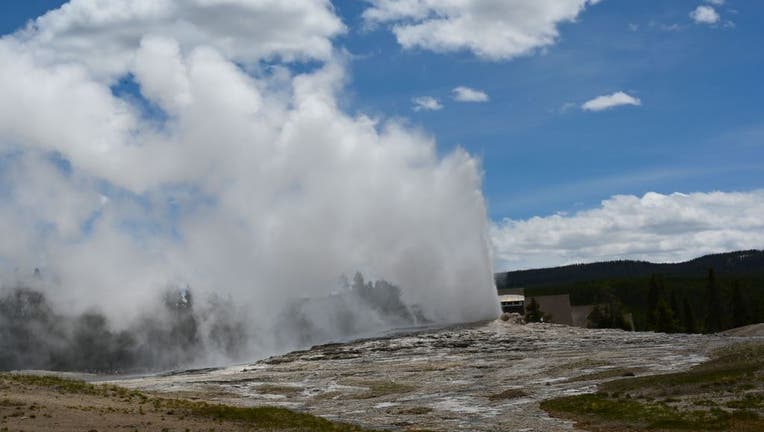Yellowstone's Old Faithful geyser might go silent after 800 years of activity, experts say

Old Faithful geyser erupts in Yellowstone National Park in Wyoming on June 11, 2019. (Credit: DANIEL SLIM/AFP via Getty Images)
Old Faithful, the famous geyser in Yellowstone National Park, may go silent after erupting continuously for nearly 800 years, experts have discovered.
According to a newly published study, the researchers found more than 40 remnants of mineralized wood near the geyser dated between 1233 and 1362 A.D., a period that is associated with "severe multidecadal regional droughts." The experts believe those severe droughts could happen again by the middle of this century, causing the geyser's eruptions to decrease or stop altogether.
RELATED: 12-year-old boy finds 69 million-year-old dinosaur fossil during hike with his dad
"Climate models project increasingly severe droughts by mid‐21st century, suggesting that geyser eruptions could become less frequent or completely cease," the researchers wrote in the study's abstract.
According to LiveScience, researchers have discovered that the interval between Old Faithful's eruptions has increased noticeably. In the 1950s, the intervals were between 60 and 65 minutes. Since 2001, the intervals increased to between 90 and 94 minutes.
RELATED: Woman returns stolen Pompeii artifacts to historic site after 15 years, claims they’re ‘cursed’
In an interview with Science Magazine, the study's lead author, Shaul Hurwitz said the discovery of the mineralized wood samples led to an "aha" moment as he found they were all from approximately the same time period.
"When I submitted the samples for radiocarbon dating I didn't know whether they would be hundreds or thousands of years old," Hurwitz said in the interview. "It was an 'aha!' moment when they all clustered within a hundred-year period in the 13th and 14th centuries."
RELATED: Tennessee fisherman catches bass holding snake in its mouth
At present, the area where the geyser is has no trees due to the hot, alkaline-rich discharge from it.
The research has been published in Geophysical Research Letters.

